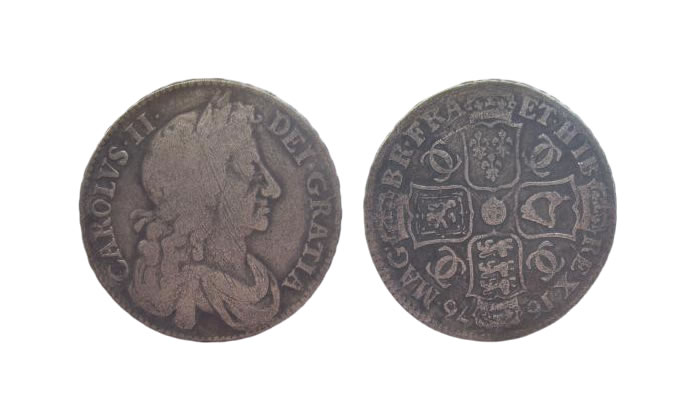Charles II halfcrown
Not many early milled coins turn up as detecting finds, especially large examples. Therefore, Glyn Peak was very lucky indeed to unearth this Charles II halfcrown, which has a lettered edge. Glyn wanted to know if the latter was to stop coins being clipped.
The halfcrown is dated 1676 on the reverse and the edge inscription reads DECVS ET TVTAMEN, which translates as Ornament and Protection; following one is V. OCTAVO, which is the regnal year of Charles II. The regnal years starts after the death of Charles I rather than 1660, when the monarchy was restored.
The first milled coins were made in 1662 and they looked far better than the old hammered money. They were known as milled coins not because they all had grained edges but because they were made by machinery. In the 1660s and for centuries before anything made by machinery was said to be milled. The newly minted silver coins that went into circulation during the reign of Charles II were crowns and halfcrowns (both with lettered edges), shillings and sixpences (both with grained edges), groats, threepences, halfgroats and pennies (the last four with plain edges).
The lettered and grained edge on the larger denominations was partly to stop clipping but it was also a step towards modernisation. Other European countries had already made that step so Great Britain was catching up rather than leading the way.
Valuation
Glyn’s halfcrown isn’t a scarce date but it’s certainly rare as a detecting find. I’d grade it as about Fine and to a collector it should be worth £100-120.
Valuation Service
If you would like your coin identified or valued, please read about my valuation service and contact me

